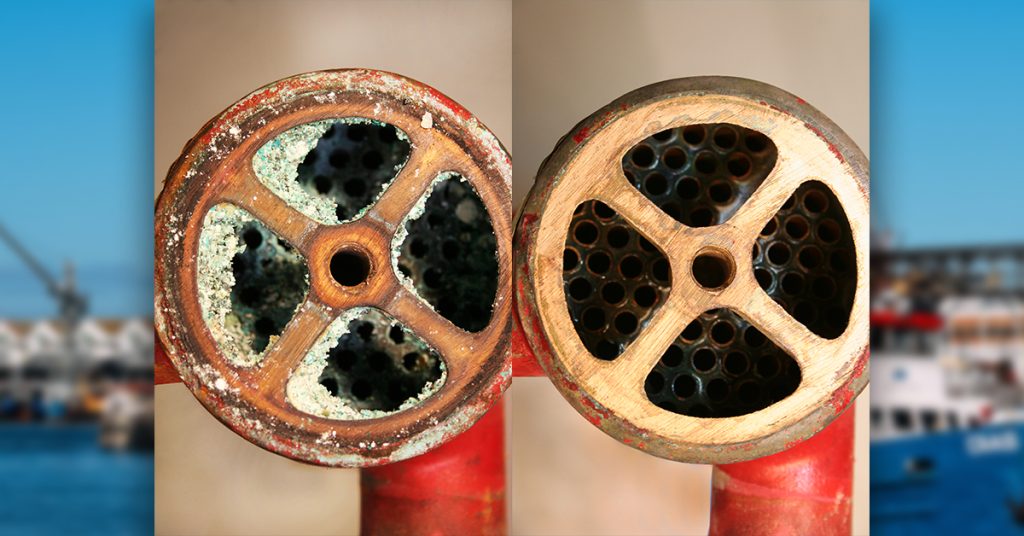Heat exchangers play a critical role in marine applications, serving as a vital component in the cooling systems of engines, generators, and other machinery. Over time, however, these units can become clogged with mineral deposits, rust, and other contaminants that can impede their performance and cause damage to the underlying equipment.
Descaling a heat exchanger is the process of removing these deposits and restoring the unit to its original efficiency. In this blog post, we’ll provide an overview of descaling techniques and offer some tips on how to keep your marine equipment running smoothly.
Why descaling is important
Over time, mineral deposits and other contaminants can build up in the tubes and passages of a heat exchanger, reducing its efficiency and causing a range of performance problems. These issues can include increased fuel consumption, reduced power output, and overheating, all of which can ultimately lead to costly breakdowns and repairs.
Descaling a heat exchanger can help prevent these problems by removing mineral deposits, rust, and other contaminants from the unit’s internal components. This process can improve the heat exchanger’s heat transfer efficiency, reduce the risk of overheating, and extend the lifespan of the equipment.
How to descale a heat exchanger
There are several methods for descaling a heat exchanger, including chemical treatments, mechanical cleaning, and high-pressure water blasting. Here are some of the most common techniques:
- Chemical descaling: This involves using a chemical solution to dissolve mineral deposits and other contaminants from the heat exchanger’s internal surfaces. Acid-based solutions are commonly used for this purpose, as they are effective at breaking down mineral buildup. However, these solutions must be used with care, as they can be corrosive and can damage some materials.
- Mechanical cleaning: This involves physically removing mineral deposits and other contaminants from the heat exchanger’s internal surfaces using specialized cleaning tools. These tools may include brushes, scrapers, or other abrasive materials, and are often used in combination with a cleaning solution to enhance their effectiveness.
- High-pressure water blasting: This involves using a high-pressure water jet to blast away mineral deposits and other contaminants from the heat exchanger’s internal surfaces. This method is highly effective at removing stubborn deposits, but it can also be quite aggressive and can potentially damage the heat exchanger if not used carefully.
Tips for maintaining your heat exchanger
To prevent mineral buildup and other performance problems, it’s important to maintain your heat exchanger regularly. Here are some tips to help keep your marine equipment running smoothly:
- Perform regular inspections: Inspect your heat exchanger periodically for signs of mineral buildup or corrosion. Look for discolored or corroded areas, as well as any signs of leakage or blockages in the tubes.
- Follow manufacturer recommendations: Follow the manufacturer’s recommended maintenance schedule and procedures for your heat exchanger. This may include regular cleaning or descaling, as well as other maintenance tasks.
- Use the right coolant: Use the recommended coolant for your heat exchanger, and check the coolant levels regularly to ensure that the unit is properly filled.
- Monitor performance: Keep an eye on the performance of your heat exchanger, and watch for signs of reduced efficiency or increased fuel consumption. If you notice any changes in performance, have the unit inspected and serviced as soon as possible.
In conclusion, descaling a heat exchanger is an important part of maintaining your marine equipment. By following these tips and using the right descaling technique, you can help ensure that your heat exchanger operates at peak efficiency and avoid costly breakdowns and repairs.


Pingback: Offshore Heat Exchanger Descaler – RYDLYME Marine